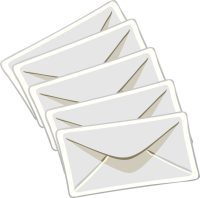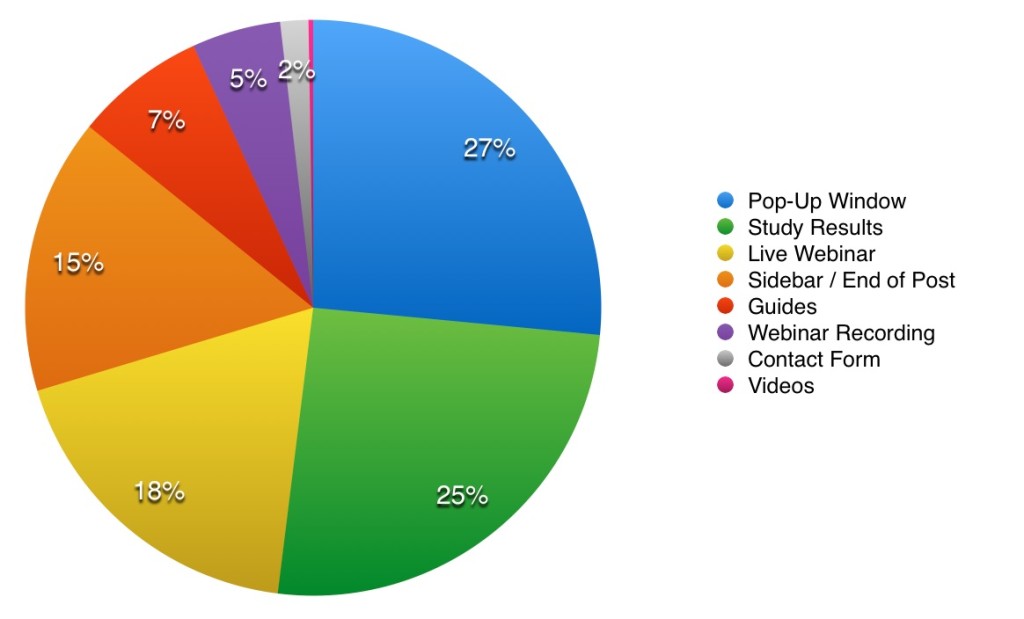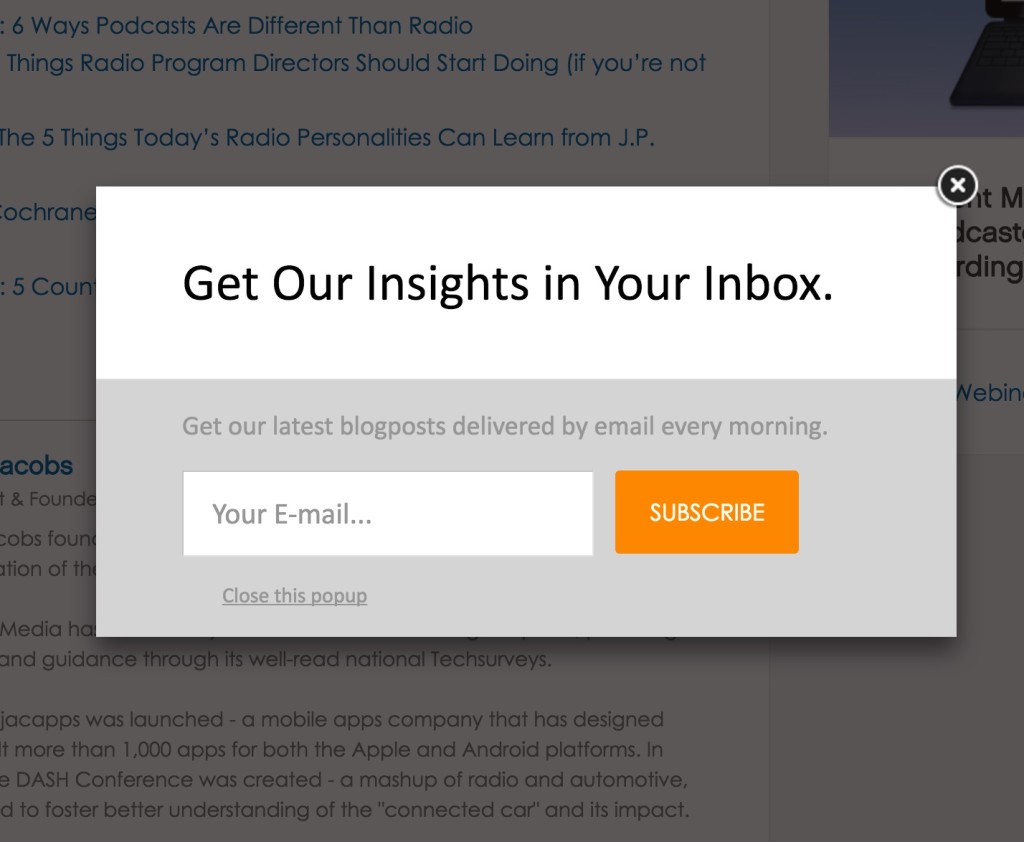 A month ago, we relaunched the Jacobs Media Strategies website. One of the main reasons – aside from the need for all businesses to have a strong website – was because we wanted to have a living, breathing example of the Content Marketing digital strategy that we preach. In short, we didn’t want to just tell you that it works; we wanted to be able to show you that it works.
A month ago, we relaunched the Jacobs Media Strategies website. One of the main reasons – aside from the need for all businesses to have a strong website – was because we wanted to have a living, breathing example of the Content Marketing digital strategy that we preach. In short, we didn’t want to just tell you that it works; we wanted to be able to show you that it works.
“But you’re not a radio station!”
That’s true. But Content Marketing is not a radio strategy. It can be adapted for use by radio stations, but it is a marketing strategy that’s used by thousands of companies outside the business.
Including ours.
Our Goal
The first and most important question you can ask when it comes to your station’s website is this: “What do we want people to do when they come to our site?” This is your goal.
Your station may have multiple goals for its website. For example, you may want people to:
- Stream your station
- Join the email list
- Enter a contest
- Click on an ad
- Buy tickets to a station event
- Purchase station merchandise
- Request advertising information
The more accurately you can tie those goals to your station’s bottom line, the better. This is easier for some businesses than others. If you sell gadgets or good through your website, it’s very easy to connect website goals to revenue. It’s tougher with a radio station. It’s also challenging with a consulting and research firm like ours, where our arrangements with clients depend on a wide range of factors.
We decided that the goal of our website is to drive people to sign up for our email list.
Calls to Action
We redesigned our website with that goal in mind. If you look closely, you will see that we encourage people to sign up in several different places:
- In a Pop-Up Window: After you’ve been on the site for enough time, a box will open asking if you’d like to subscribe to our blog. This pop-up does not appear on the mobile version of the site.]
- In the Sidebar: On the desktop version of the website, there is a box in the sidebar inviting readers to subscribe to the blog.
- At the end of Blogposts: At the end of every blogpost, we invite people to sign up to receive the blog by email.
- Research Results: We put a lot of “freemium” content behind forms. It doesn’t cost people anything to access it, but they have to fill out a form providing their data and subscribing to the blog.
- Webinars: We use this form for both live and recorded webinars.
- Guides: We have created several guides, such as our “12 Steps to Launching a Successful Blog,” behind forms.
- Videos: Our short videos are not behind forms, but a handful of longer ones are.
- Contact Form: When you fill out the contact form, you can check a box and subscribe to our blog.
In the month since we’ve launched the new site, our email list has grown by nearly 40%. We wanted to know which of these sources was driving the most email signups. Every email signup form on the site passes an unseen code that allows us to track this. Here’s how they break down:

The pop-up window was the top source, resulting in more than a quarter of the new email signups. Pop-up windows are very effective at driving email signups. (Note: This does not mean your radio station should start using pop-up windows for advertisers, only for your own station’s email list.)
One of the more interesting findings is that we didn’t need to bribe people to sign up for our blog: 27% of signups came from the Pop-Up Window and 15% came from the Sidebar / End of Post forms. In other words, 42% of people subscribed to our mailing list just because we asked them to. That may be something to think about in your web efforts.

Two other big sources were Study Results at 25% (driven by our recently completed Techsurvey) and Live Webinars at 18%. Obviously, your station doesn’t have these assets to offer to listeners. But you very likely have other things that could help your accomplish your goals. You might track contest entries, or put “freemium” content like artist interview recordings behind a form.
Decide what you want people to do when they come to your radio station’s website. Then set up your site so you can not only track the number of visitors who are accomplishing that goal, but also how they are accomplishing it.
We are doing our best to not just talk the talk, but actually walk the walk. We hope you can benefit from our efforts, and we invite your ideas and feedback.
More Digital Tips
- Here’s an Example of a Very Well Designed Broadcasting Website
- Signing on a New Radio Station? Here’s Your Digital Checklist.
- A Radio Station’s Guide to Launching a Blog
- 10 Pieces of Sales-Related Content That Should Be on Your Radio Station’s Website
- Intro to Digital Analytics for Radio Stations
- A Simple Digital Treat to Thank Your Radio Listeners This Thanksgiving - November 13, 2023
- Interview Questions When Hiring Your Radio Station’s Next Digital Marketing Manager - November 6, 2023
- A Radio Conversation with ChatGPT: Part 2 – Promotions - October 30, 2023





Leave a Reply